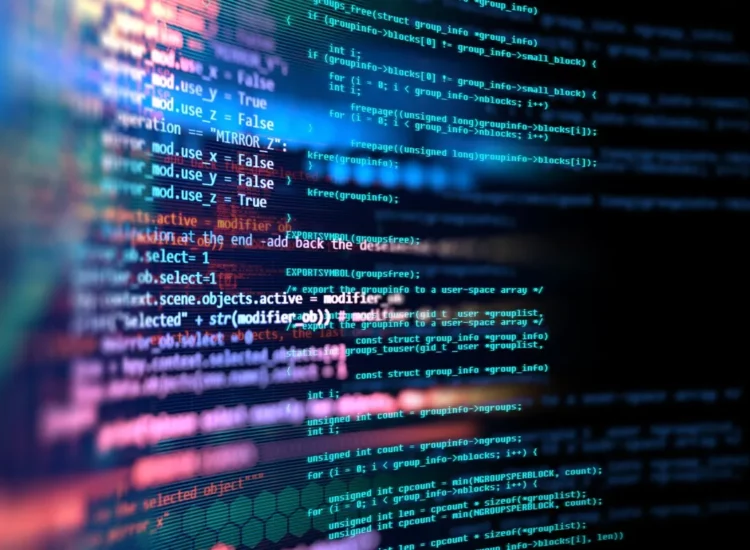The Rise of the Machines and the Counter-Measure: Understanding Artificial Intelligence Detectors
The rapid advancement of artificial intelligence, particularly in the realm of natural language processing and generation, has ushered in an era where AI can produce text that is often indistinguishable from human writing. This capability, while offering numerous benefits, has also raised concerns about the potential misuse of AI-generated content. In response to these concerns, a new category of tools has emerged: Artificial Intelligence Detectors. These sophisticated software applications aim to identify text that has been generated by AI models, helping to maintain authenticity and combat the spread of misinformation. This comprehensive article will delve into the world of AI detectors, exploring their technology, the challenges they face, their applications across various sectors, and the ongoing evolution of this critical field.
Toc
- 1. 1. Introduction to Artificial Intelligence Detectors
- 2. 2. The Technology Behind AI Detectors
- 3. Related articles 01:
- 4. 3. The Evolving Landscape of AI-Generated Content
- 4.1. 3.1. Advancements in AI Writing Models (e.g., GPT-3, GPT-4)
- 4.2. 3.2. The Increasing Sophistication and Human-Like Quality of AI Text
- 4.3. 3.3. The Challenge of Distinguishing AI-Generated Content from Human Writing
- 4.4. 3.4. The Use of AI in Content Creation Across Various Industries
- 4.5. 3.5. The Implications for Academic Integrity and Plagiarism
- 5. 4. Applications and Implications of AI Detectors
- 6. Related articles 02:
- 7. 5. The Future of AI Detection
- 7.1. 5.1. Ongoing Research and Development in AI Detection Methods
- 7.2. 5.2. The Potential Role of Watermarking and Digital Signatures
- 7.3. 5.3. The Importance of Human Oversight and Critical Evaluation
- 7.4. 5.4. The Ethical Considerations of Using AI Detection Tools
- 7.5. 5.5. The Continuous Arms Race Between AI Generators and AI Detectors

1. Introduction to Artificial Intelligence Detectors
The proliferation of powerful AI writing tools has created a pressing need for mechanisms to identify their output. Understanding what AI detectors are and why they are becoming increasingly vital is crucial in navigating this new technological landscape.
1.1. Defining Artificial Intelligence Detectors
Artificial Intelligence Detectors are software tools designed to analyze text and determine the likelihood of it being generated by an AI model rather than a human. These detectors employ various techniques, including statistical analysis of text patterns, natural language processing (NLP), and machine learning algorithms, to identify the subtle characteristics that often distinguish AI-generated text from human writing. The goal is to provide a probability score or a classification indicating whether a given piece of text was likely created by an AI.
1.2. The Growing Relevance in the Age of Generative AI
The past few years have witnessed remarkable progress in generative AI models, such as GPT-3 and its successors. These models can produce remarkably coherent, fluent, and contextually relevant text on a wide range of topics. While this capability has numerous positive applications, it also presents challenges. The ease with which AI can generate high-quality text has raised concerns about its potential use in academic dishonesty, the spread of disinformation, and the creation of automated spam and low-quality content. This has led to a significant increase in the relevance and demand for effective AI detection tools.
1.3. The Need for AI Detection Tools
The need for AI detection tools stems from several critical areas:
- Academic Integrity: Educators are concerned about students using AI to generate essays and assignments, undermining the learning process and making it difficult to assess genuine understanding.
- Combating Disinformation: The ability of AI to generate realistic-sounding text can be exploited to create and spread false or misleading information, posing a threat to public discourse and trust.
- Content Quality and SEO: Website owners and search engines are concerned about the potential for AI to flood the internet with low-quality or spam content, impacting search engine rankings and the overall quality of online information.
- Authenticity and Authorship: In various professional and legal settings, it is important to verify the authorship of documents and ensure that content is genuinely created by the attributed author.
AI detection tools offer a potential solution to these challenges by providing a means to identify AI-generated text and take appropriate action.
1.4. The Scope and Limitations of Current AI Detectors
While AI detection technology is rapidly evolving, it is important to acknowledge its current scope and limitations. Existing AI detectors are not foolproof and can sometimes produce false positives (identifying human-written text as AI-generated) or false negatives (failing to detect AI-generated text). The accuracy of these detectors can vary depending on the AI model used to generate the text, the complexity of the writing, and the length of the text sample. Furthermore, AI writing models are constantly improving, making the task of detection an ongoing challenge. Therefore, current AI detectors should be viewed as valuable tools that can provide insights but should not be relied upon as the sole determinant of authorship. Human oversight and critical evaluation remain essential.
2. The Technology Behind AI Detectors
AI detectors employ a range of sophisticated techniques to analyze text and identify patterns that are characteristic of AI-generated writing. Understanding these methods provides insight into how these tools work and their potential strengths and weaknesses.

2.1. Statistical Analysis of Text Patterns
One of the fundamental approaches used by AI detectors involves the statistical analysis of text patterns. AI-generated text often exhibits different statistical properties compared to human writing. For example, AI models might produce text with a more consistent level of complexity, a narrower range of vocabulary, or a more predictable sentence structure. Detectors can analyze these statistical features, such as word frequency, sentence length variation, and the distribution of grammatical structures, to identify anomalies that might indicate AI authorship.
2.2. Natural Language Processing (NLP) Techniques
Natural Language Processing (NLP) plays a crucial role in AI detection. NLP techniques allow detectors to understand the meaning and structure of text, going beyond simple keyword analysis. These techniques can involve analyzing the semantic coherence of the text, the relationships between words and phrases, and the overall flow and organization of ideas. AI models might sometimes produce text that lacks the subtle nuances, inconsistencies, or creative leaps that are often found in human writing. NLP techniques can help to identify these subtle differences.
2.3. Machine Learning Models and Training Data
At the core of most advanced AI detectors are machine learning models. These models are trained on vast datasets of both human-written and AI-generated text. During the training process, the models learn to identify the patterns and characteristics that are most indicative of each type of writing. Different AI detectors may use different machine learning architectures and training datasets, which can impact their accuracy and effectiveness. The quality and diversity of the training data are crucial for the model’s ability to generalize and accurately detect AI-generated text across various styles and topics.
2.4. Feature Extraction and Classification
The process of AI detection typically involves feature extraction and classification. Feature extraction is the process of identifying and quantifying the relevant characteristics of a piece of text that might distinguish it as human-written or AI-generated. These features can include statistical measures, linguistic patterns identified through NLP, and other indicators. Once these features are extracted, a classification model (often a machine learning algorithm) is used to analyze these features and assign a probability or a category (e.g., “human,” “AI,” or a probability score indicating the likelihood of AI generation).
2.5. Challenges in Detecting Sophisticated AI-Generated Text
Detecting sophisticated AI-generated text presents significant challenges. As AI writing models become more advanced, they are increasingly capable of mimicking the nuances and complexities of human writing. They can learn to vary sentence structure, use a wider range of vocabulary, and even incorporate stylistic elements that make their output appear more human-like. This constant improvement in AI generation technology requires AI detectors to continuously evolve and incorporate more advanced detection techniques to stay ahead of the curve.
3. The Evolving Landscape of AI-Generated Content
The rapid advancements in AI writing models are constantly changing the landscape of content creation and posing new challenges for AI detection. Understanding these advancements is crucial for appreciating the complexities of this field.
3.1. Advancements in AI Writing Models (e.g., GPT-3, GPT-4)
The development of large language models like GPT-3 and GPT-4 has marked a significant leap forward in AI’s ability to generate human-quality text. These models, trained on massive amounts of data, can perform a wide range of writing tasks, from drafting emails and articles to writing code and even poetry. Their ability to understand context, generate coherent and fluent text, and adapt to different writing styles has made them incredibly versatile tools.
3.2. The Increasing Sophistication and Human-Like Quality of AI Text
One of the most striking aspects of these advanced AI models is the increasing sophistication and human-like quality of their output. The text generated by these models often exhibits a high degree of grammatical correctness, logical flow, and topical relevance. In many cases, it can be difficult for even experienced human readers to distinguish AI-generated text from writing produced by a person. This level of sophistication poses a significant challenge for AI detection tools that rely on identifying subtle statistical or linguistic anomalies.
3.3. The Challenge of Distinguishing AI-Generated Content from Human Writing
The core challenge for AI detectors lies in the fact that the goal of advanced AI writing models is to mimic human writing as closely as possible. As these models become more successful in achieving this goal, the differences between AI-generated and human-written text become increasingly subtle and harder to detect. This requires AI detection tools to become more nuanced and sophisticated in their analysis, looking for very fine-grained patterns and characteristics that might betray the AI’s involvement.
3.4. The Use of AI in Content Creation Across Various Industries
The capabilities of AI writing models are being leveraged across a wide range of industries. In marketing, AI can be used to generate website copy, social media posts, and email campaigns. In journalism, AI can assist with tasks like summarizing news articles and generating basic reports. In academia, students might be tempted to use AI to write essays and complete assignments. The increasing use of AI in content creation underscores the importance of having reliable methods to identify AI-generated text in situations where authenticity and human authorship are important.
3.5. The Implications for Academic Integrity and Plagiarism
The rise of AI writing tools has significant implications for academic integrity and the issue of plagiarism. Students can now easily generate essays and research papers using AI, raising concerns among educators about the validity of assessments and the learning process. Traditional plagiarism detection tools, which primarily work by comparing text against existing sources, may not be effective in identifying AI-generated content that is original but not human-authored. This has created a need for AI detection tools that can specifically identify text produced by AI models to help maintain academic standards.
4. Applications and Implications of AI Detectors
The ability to identify AI-generated text has a wide range of applications across various sectors, each with its own set of implications.
4.1. Educational Institutions: Detecting AI-Generated Essays and Assignments
One of the most immediate and prominent applications of AI detectors is in educational institutions. Educators are increasingly concerned about students using AI writing tools to complete essays, research papers, and other assignments. AI detectors can provide teachers and professors with a tool to help identify submissions that were likely generated by AI, allowing them to address issues of academic dishonesty and ensure that students are genuinely learning and developing their writing skills. However, it is crucial that these tools are used responsibly and that educators understand their limitations to avoid false accusations.
4.2. Journalism and Media: Ensuring Authenticity and Combating Disinformation
In the realm of journalism and media, the ability of AI to generate realistic-sounding news articles and other content raises concerns about the potential for the spread of disinformation. AI detectors can play a role in helping news organizations and fact-checkers identify articles or pieces of content that may have been generated by AI, allowing them to verify the information and combat the spread of false narratives. Ensuring the authenticity of news and information is crucial for maintaining public trust and a well-informed society.
4.3. Content Marketing and SEO: Identifying AI-Generated Spam and Low-Quality Content
In the world of content marketing and Search Engine Optimization (SEO), there is a risk that individuals or organizations might use AI to generate large volumes of low-quality or spam content in an attempt to manipulate search engine rankings. AI detectors can help search engines and website owners identify such AI-generated content, allowing them to filter it out and maintain the quality and relevance of online information. This helps to ensure that users are finding valuable and genuinely human-created content when they search online.
4.4. Legal and Professional Settings: Verifying the Authorship of Documents
In certain legal and professional settings, verifying the authorship of documents is crucial. For example, in legal proceedings, the authenticity of contracts, testimonies, or other written evidence might need to be established. AI detectors could potentially be used as a tool to help assess whether a document was likely written by a human or generated by an AI, although the reliability and admissibility of such evidence would need to be carefully considered. Similarly, in other professional fields, verifying the authorship of reports, articles, or other important documents might be necessary.
4.5. The Broader Societal Implications of Widespread AI-Generated Content
The widespread availability and use of AI writing tools have broader societal implications. The potential for AI to generate realistic-sounding text on a massive scale could impact how we perceive information, trust online sources, and even interact with each other. AI detectors are one part of the response to these implications, providing a mechanism to identify AI-generated content in situations where it is important to do so. However, navigating this new landscape will require a multifaceted approach that also includes education, critical thinking, and the development of ethical guidelines for the use of AI.
5. The Future of AI Detection
The field of AI detection is constantly evolving in response to the rapid advancements in AI generation technology. The future of AI detection will likely involve ongoing research, the development of new techniques, and a continuous arms race between AI generators and detectors.

5.1. Ongoing Research and Development in AI Detection Methods
Researchers are actively working on developing more accurate and robust methods for detecting AI-generated text. This includes exploring new statistical features, leveraging more advanced NLP techniques, and training more sophisticated machine learning models on larger and more diverse datasets. The goal is to create AI detectors that can reliably distinguish between human and AI writing even as AI models become more adept at mimicking human style.
5.2. The Potential Role of Watermarking and Digital Signatures
One potential solution to the challenge of AI detection is the development and implementation of watermarking or digital signature technologies for AI-generated text. If AI writing models could be designed to embed subtle, detectable markers in their output, it would make it much easier to identify AI-generated content. However, the implementation of such technologies would require widespread adoption by AI developers and agreement on standards, which could present logistical and ethical challenges.
5.3. The Importance of Human Oversight and Critical Evaluation
Despite the advancements in AI detection technology, human oversight and critical evaluation will remain crucial. AI detectors are not perfect and can make mistakes. Therefore, it is important for educators, journalists, and other professionals to use these tools as aids in their analysis but not as definitive proof of AI authorship. Human judgment, critical thinking, and contextual understanding will continue to be essential in assessing the authenticity and quality of written content.
5.4. The Ethical Considerations of Using AI Detection Tools
The use of AI detection tools also raises ethical considerations. Concerns have been raised about the potential for these tools to be biased or to disproportionately flag text written by non-native English speakers or individuals with unique writing styles. It is important to ensure that AI detection tools are developed and used responsibly, with careful consideration of potential biases and the need for transparency in their operation.
5.5. The Continuous Arms Race Between AI Generators and AI Detectors
The development of AI writing models and AI detection tools is likely to continue as a continuous arms race. As AI generators become more sophisticated, AI detectors will need to adapt and improve their methods. This ongoing cycle of innovation and counter-innovation will likely shape the future of both AI content creation and detection. Staying informed about the latest advancements in both fields will be essential for navigating this evolving landscape.
In conclusion, Artificial Intelligence Detectors are emerging as a critical tool in the age of increasingly sophisticated AI-generated content. While these detectors offer valuable assistance in identifying AI writing, it is important to understand their technology, limitations, and the ethical considerations surrounding their use. The future of AI detection will likely involve ongoing advancements and a continuous effort to keep pace with the rapidly evolving capabilities of AI writing models. As AI continues to transform the way we create and consume information, the role of AI detectors in maintaining authenticity and combating misinformation will only become more significant.
















